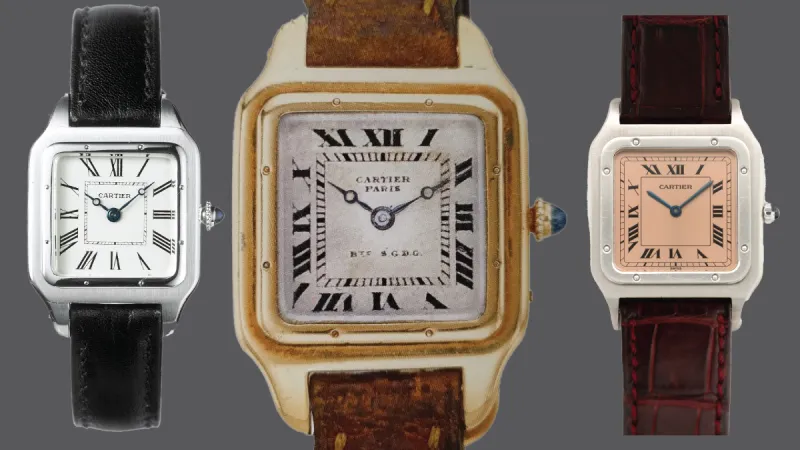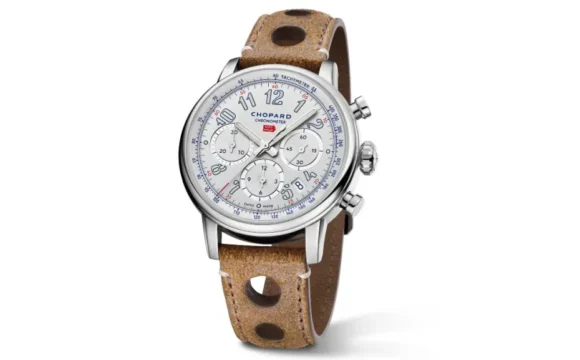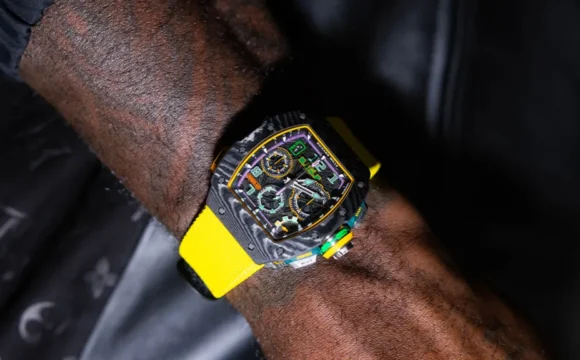In the early years of the 20th century, an enterprising Brazilian-born inventor and aviator named Alberto Santos-Dumont experimented with primitive flying machines in the skies above Paris. Piloting these lighter-than-air and fixed-wing aircraft, the daring young pioneer searched for a special timepiece that he could use while his hands were engaged at the controls. Louis Cartier, third generation scion of the famed Parisian jeweler, answered his call by designing a hand-wound wristwatch with a rectangular dial, a bezel with visible screws, integrated lugs, a blue sapphire cabochon crown, and an elegant Roman-numeral dial with a railroad minute track and blued steel Breguet hands. Presented to Santos-Dumont, the model was subsequently made available to the public beginning in 1911 and housed in a gold or platinum case with a mechanical movement from European Watch & Clock Company.

In 1978, Cartier released a second collection simply dubbed “Santos," beefing up somewhat the delicate frame of the Santos-Dumont—the world’s first dedicated “pilot’s watch," as strange as that may seem!—and adding, in certain instances, a bracelet with dual rows of visible screws that match those on the bezel. Available in various sizes with steel or precious metal cases; time-only or complicated movements; and straps or bracelets, the modern Santos de Cartier collection also includes takes on the original Santos-Dumont watch. In and out of production for over a century, the collection represents a milestone in sports watch production—indeed, even if no modern pilot would rely upon one, hordes of collectors around the world would gladly snap one up to wear to a cocktail party or gala.
From the article by Allen Farmelo, Paige Reddinger, Victoria Gomelsky, Oren Hartov, Blake Buettner








